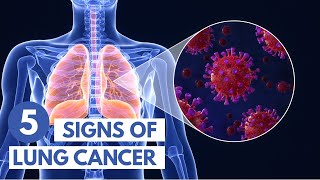![]()
5 Signs of Lung Cancer: A 3D Animation Insight
Lung cancer remains one of the most common and deadly cancers worldwide, with millions affected each year. Early detection is crucial for improving survival rates, and understanding the signs and symptoms can make a significant difference. This article delves into the five key signs of lung cancer, enriched with 3D animation insights to offer a clearer understanding of what to watch out for.
1. Persistent Cough
What Happens in Your Lungs?
A persistent cough that lingers for weeks or even months is often the first sign of lung cancer. While many dismiss it as a lingering cold or bronchitis, it’s crucial to pay attention to a cough that doesn’t go away. In a 3D animation, you can see how the tumor irritates the lining of the airways, leading to chronic coughing. The animation can illustrate the tumor’s impact on the bronchial tubes, causing constant irritation and mucus production.
When to Seek Help
If you have a cough that lasts more than eight weeks or changes in character—becoming more frequent, deeper, or accompanied by blood—it’s time to consult a healthcare professional.
2. Shortness of Breath
The Breathing Mechanism
Shortness of breath, or dyspnea, occurs when lung cancer obstructs air passages or fluid accumulates in the chest. 3D animations effectively show how tumors can block major airways, reducing airflow and oxygen intake. Additionally, they can depict pleural effusion, where excess fluid between the lung and chest wall compresses the lung, making it difficult to breathe.
Recognizing the Signs
Experiencing breathlessness during routine activities, such as climbing stairs or walking short distances, should not be ignored. These animations help viewers understand the mechanical obstructions and fluid build-ups causing this symptom.
3. Chest Pain
Understanding the Pain Source
Chest pain linked to lung cancer can be sharp, dull, constant, or intermittent. This pain occurs when a tumor invades the chest wall or the lining around the lungs, known as the pleura. In 3D animations, viewers can see the precise location and extent of the tumor’s invasion, providing a visual understanding of why the pain occurs.
When to Worry
Any unexplained chest pain that persists, worsens with deep breathing, coughing, or laughing, and doesn’t resolve with rest should prompt a medical evaluation.
4. Unexplained Weight Loss
The Body’s Response to Cancer
Cancer can cause the body to use more energy than usual, leading to weight loss. Tumors release substances that alter the way the body uses food energy. 3D animations can illustrate how these metabolic changes occur, showing how cancerous cells affect normal body function and lead to significant weight loss without trying.
Monitoring Your Weight
Losing more than 5% of your body weight in a short period, without diet or exercise changes, is a red flag. If you notice such a change, it’s essential to consult a healthcare provider.
5. Fatigue
How Cancer Causes Fatigue
Cancer-related fatigue is profound and doesn’t improve with rest. It can result from the cancer itself or the body’s response to cancer. 3D animations help illustrate how the immune system’s efforts to fight the tumor can drain energy levels, leading to persistent and debilitating fatigue.
Recognizing Severe Fatigue
If you feel exhausted all the time, even after a full night’s sleep, and find it hard to carry out daily activities, it might be more than just a busy lifestyle. Persistent fatigue warrants a medical check-up.
The Role of 3D Animation in Education
3D animations play a crucial role in educating the public about lung cancer. They provide a detailed, visual representation of how cancer affects the body, making it easier to understand complex medical information. These animations can show the progression of cancer, the impact on surrounding tissues, and the symptoms experienced by patients.
By utilizing 3D animations, healthcare providers can offer patients and the general public a clearer picture of what lung cancer entails, emphasizing the importance of early detection and intervention. These visual tools are invaluable in making the invisible visible, helping to demystify the disease and promote better health outcomes.
Conclusion
Early detection of lung cancer can significantly improve the chances of successful treatment and survival. Recognizing the signs—persistent cough, shortness of breath, chest pain, unexplained weight loss, and fatigue—is essential. 3D animations enhance understanding by visually depicting how lung cancer affects the body, making it easier to grasp the importance of these symptoms. If you or a loved one experiences any of these signs, seeking medical advice promptly could be life-saving. Stay informed, stay vigilant, and utilize all available resources to understand lung cancer better.
